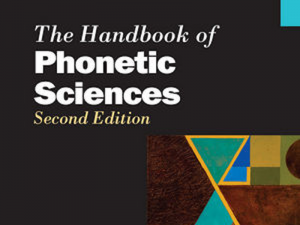Written for a non-technical audience, this gently introduces some key concepts in speech signal processing.
Handbook of phonetic sciences – Ch 20 – Intro to Signal Processing for Speech (Sections 1-5)
Written for a non-technical audience, this gently introduces some key concepts in speech signal processing. Read sections 1-5 (up to and including ‘Fourier Analysis’).
Handbook of phonetic sciences – Ch 20 – Intro to Signal Processing for Speech (Sections 6-7)
Written for a non-technical audience, this gently introduces some key concepts in speech signal processing. Read sections 6-7.
Holmes & Holmes – Chapter 10 – Front-end analysis for ASR
Covers filterbank, MFCC features. The material on linear prediction is out of scope.
Holmes & Holmes – Chapter 5 – Message synthesis from stored human speech components
Pitch-synchronous overlap-and-add (PSOLA) remains a key technique in speech signal processing.
Introduction to the IPA from the Handbook of the International Phonetic Association
Describes the aims of the International Phonetic Alphabet and its various uses.
Jurafsky & Martin – Section 4.3 – Training and Test Sets
As we should already know: in machine learning it is essential to evaluate a model on data that it was not learned from.
Ladefoged (Elements) – Chapter 1 – Sound waves
Very brief, but a reasonable place to start if you have no idea what sound is.
Ladefoged (Elements) – Chapter 2 – Loudness and pitch
These are perceptual phenomena that relate to physical properties of sound.
Ladefoged (Elements) – Chapter 3 – Quality
A general term for aspects of sound other than loudness and pitch. Different vowels, for example, have a different quality of sound.
Ladefoged (Elements) – Chapter 4 – Wave analysis
The waveform is rarely the best representation for analysis of sound, and this is an intuitive introduction to why.
Ladefoged (Elements) – Chapter 5 – Resonance
Now we turn to speech production, and resonance is how the vocal tract shapes the quality of sound, to produce different vowels, for example.

